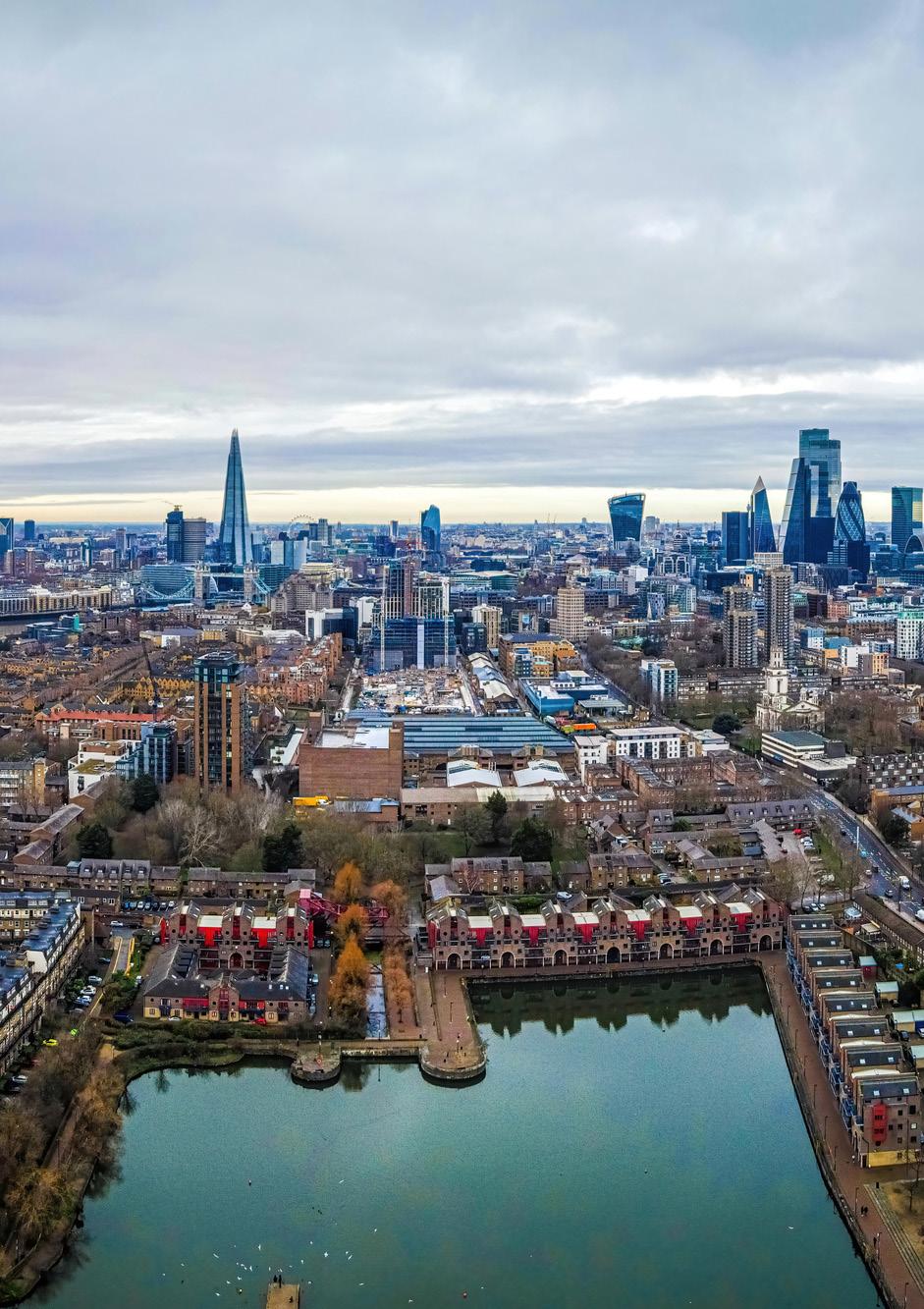


























































































By Bruce Houlder, Founder, Fighting Knife Crime London
Since FKCL’s foundation on June 1st 2021, we have been supported in aspects of our administration by CATCH 22 , the well-known not-for-profit business with a social mission. They have held our funds separately and responded with generosity whenever we needed advice. We have also been able to avail ourselves of their charitable status through this relationship. For me, this has been invaluable.
Although we have always functioned quite separately, FKCL worked with






Catch 22 at the invitation of their previous CEO, Chris Wright , who had great faith in our project, and recognised its need. Ever since Chris moved on,and passed the baton to Naomi Hulston , we have continued with this fruitful relationship. Since March 2024 we have been an independent charity and it is only right that we now have our own direct banking arrangements, which we now hold at the Charities Aid Foundation Bank (CAFBANK).
Joe Raby , assistant director of Justice at Catch 22, remains a trustee of FKCL,
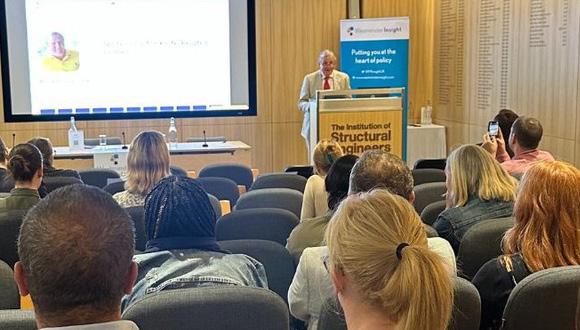
so there is no chance that these fruitful aspects of our previous relationship will completely lapse. This is the moment however to say thank you to all at Catch 22 who have helped us.
This has been an eventful quarter. I have had the chance to visit several schools across London, as well as Sheffield Hallam University who have long supported our work. I have also been in conversation with the Director of Cleveland VRU who is keen to bring something resembling our model to his own region of responsibility. A ball has started rolling here, so let’s see where it leads. I have given interviews on national media, as well as being speaker at the recent “Tackling Knife Crime” June conference in London run by Westminster Insight. FKCL has been increasingly encouraged by correspondents seeking advice and help, and we have had the satisfaction of being able, not only to direct them to our own resources, but, by speaking to them, we have been able to improve the outreach and collaborative resources
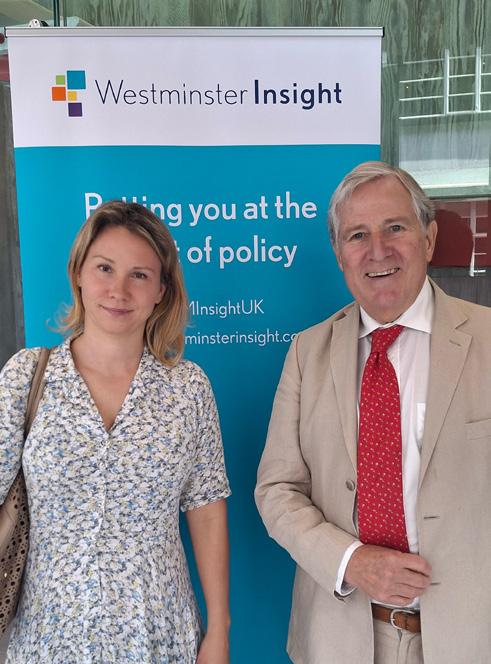
we offer. Most pleasurable of all perhaps has been the opportunities, particularly at events, that I have had to meet the real heroes who work directly helping young people in so many different ways across London, and by this work, changing their lives for the better.
Our 16th Edition continues the tradition we have now established. This is not a standard newsletter, but an informative repository of academic (and a new word for me – pracademic) research, new experience and success stories from those who know best how to empower young people and help improve young lives. Sound evidence to support everything that these experts write about is to be found here, as our regular subscribers have discovered.
If you wish to subscribe, it is free (as everything we do is) and you can do it here
First, Kat Agar, the Chief Executive Officer of Oasis Community Partnerships, the youth and communities’ function of Oasis, gives an inspiring picture of transformative
change. Oasis’ experience is vast. Amongst other projects, Oasis runs 54 schools, 23 community hubs, housing projects, youth work, specialist mentoring, and the UK’s first secure school, Oasis Restore
Next, former Det. Supt. Lorraine Hilder, former lead for the Met on Child Exploitation and Missing Persons, brings her considerable academic and practical policing experience to this very considerable and topical issue. She was recognised in the latest HMICFRS report for her leading role in improving the Met’s response to the sexual and criminal exploitation of children, which helped to take the Met out of special measures. Having just retired after 34 years in the Met, she moves soon to a very similar role overseas. We wish her very well in this role. They are the lucky ones.
Our third contribution, from David Kingsley of Criminology Services, casts a detailed academic light on the evolution of gangs, technology and brings us up to date on some of the work being done in this area. As he writes “If we truly want to fight knife crime, we must listen harder, intervene earlier, and care deeper”.
Our fourth piece is from Rukanah Mogra of the Muslim Council of Britain. London’s Muslim communities have not been untouched by the devastating impact of knife crime – with families, youth groups, and places of worship all grappling with its consequences. He gives us an informative and national perspective on the work being done by Mosques all over the country to help young Muslims avoid getting involved with gangs and violence and make better lives for themselves.
Staying with the theme of gangs, Anna Mbwese of Shine AI who is launching a new platform to help people find careers
and give meaning to their lives. As she says ‘…we can show young people that a financially sustainable life is possible, regardless of where they start…”. This is one to follow with interest and is much needed. It also offers an opportunity for collaboration across London with other organisations who are motivating young people to find employment.
Our final piece comes from Leroy Nicholas of Sweet Science Foundation who has over 20 years experience with young people in schools, Youth Offending Teams and Pupil Referral Units. In 2023, he now works with Sweet Science Foundation. They use non-contact boxing to do three things: get young people’s Attention, earn their Respect and win their Trust. It’s an inspiring story.
Founder of Fighting Knife Crime London (FKCL)
www.fightingknifecrime.london

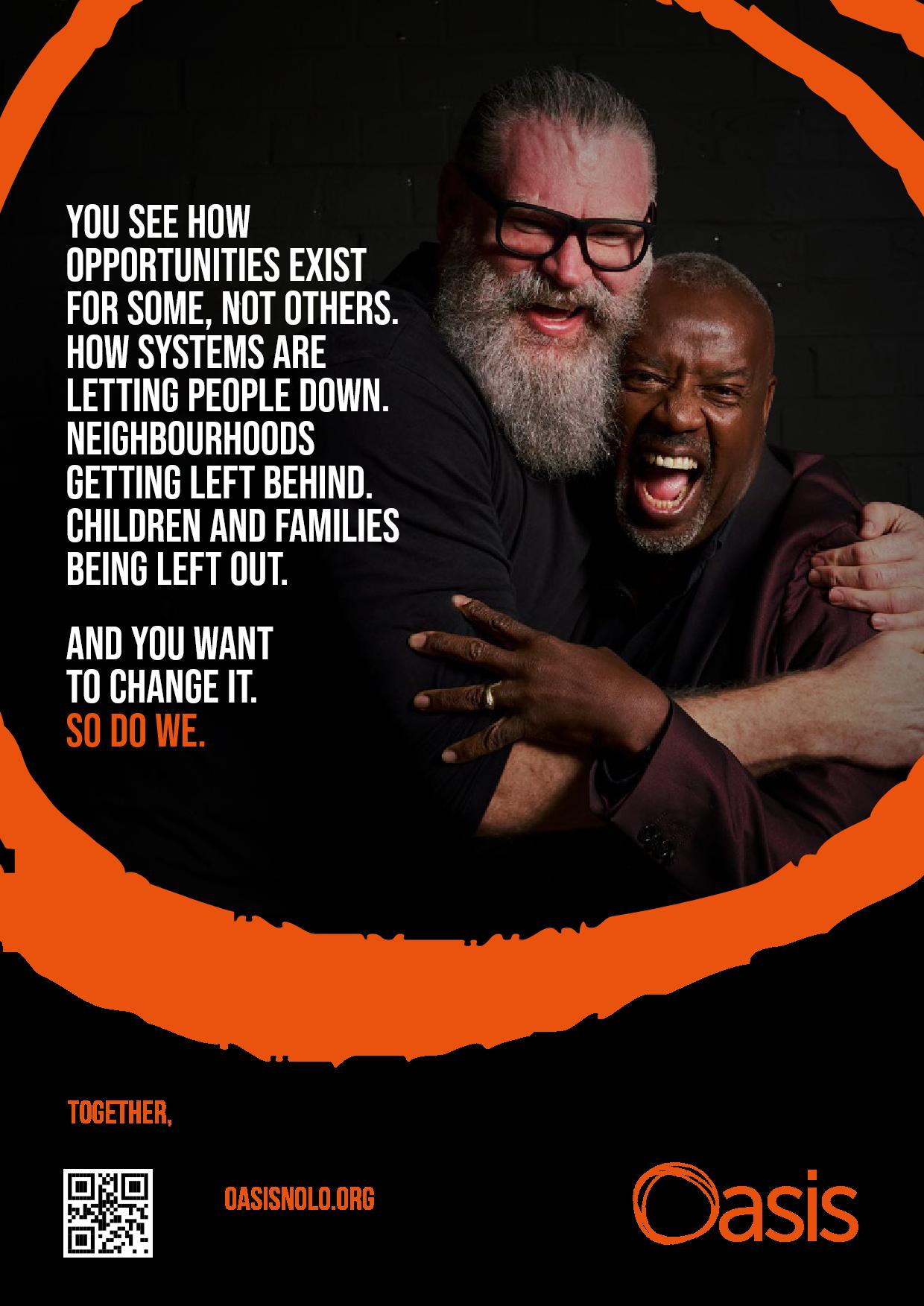
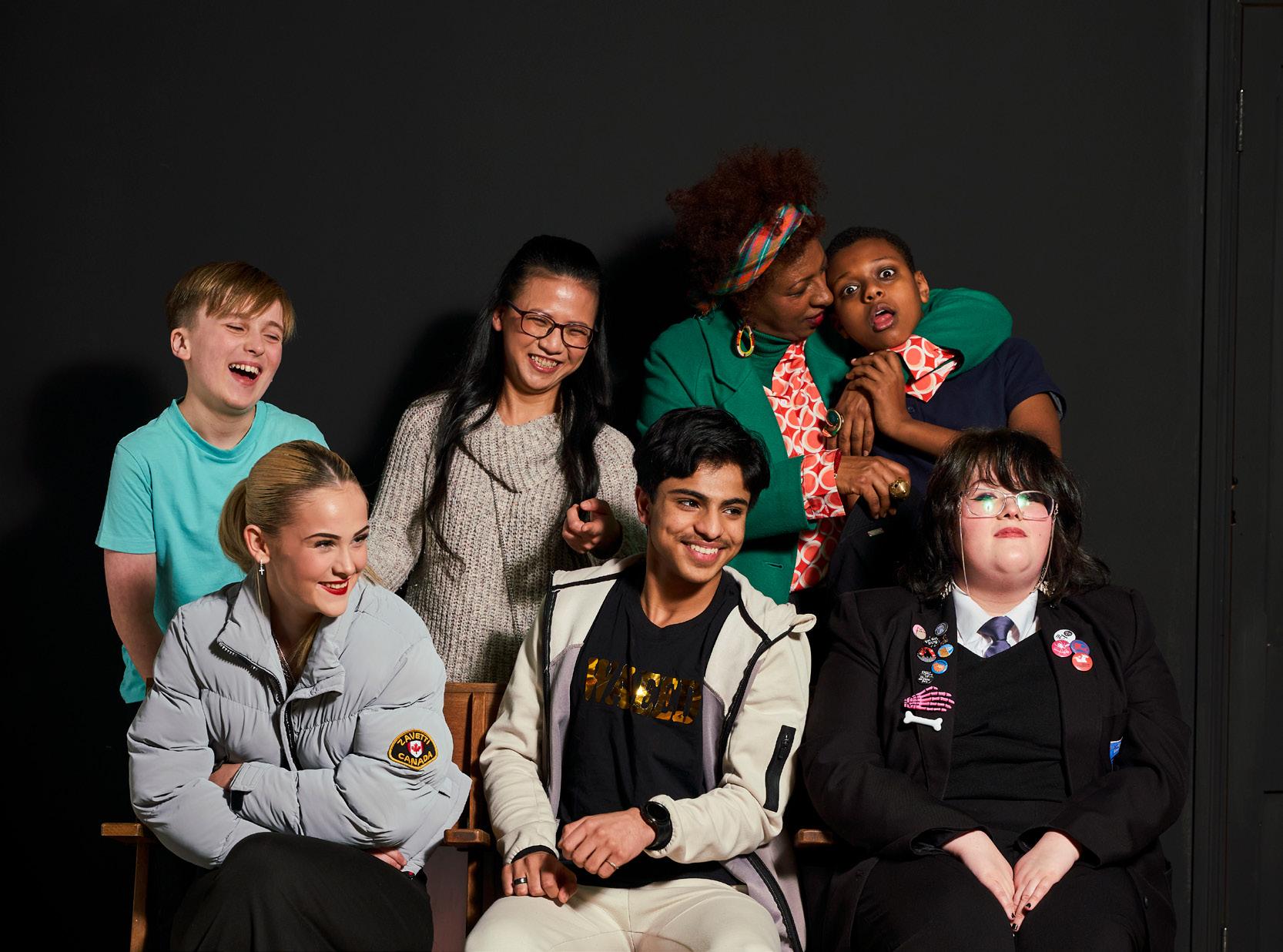
By Kat Agar, CEO of Oasis Community Partnerships
Last year, Home Secretary Yvette Cooper declared Labour’s mission to halve knife crime within a decade. In response, legislation was introduced to ban the possession and sale of zombiestyle knives and machetes. Yet, since then, the Metropolitan Police have recorded a 2.7% increase in knife crime. The problem isn’t about access to knives. The problem runs much deeper: it’s about inclusion.
If we truly want to halve knife crime, firstly we must recognise that knife crime is not just about young people. Secondly, we must double down
on inclusion and give communities, including young people, purpose and hope. While banning certain types of knives is important, these measures are merely a plaster on a much deeper wound. Young people don’t get involved in knife crime because knives are accessible — they do so because they feel vulnerable, isolated, and hopeless in a society that has failed them.
At Oasis, the charity whose youth and community work I lead, our mission is to build stronger communities where there
is no one left out. We run 54 schools, 23 community hubs, housing projects, youth work, specialist mentoring, and the UK’s first secure school, Oasis Restore . Over four decades, we’ve learned that young people only thrive when all their needs are met in a holistic and integrated way. Not through a patchwork of disconnected policies, but through community.
So, what does it mean to double down on inclusion? It means investing in youth hubs — ecosystems of support that address the full range of young people’s needs: education, mental and physical health, housing, and more, all in a joined-up way.
Last year, Labour announced plans to invest in a network of ‘youth futures’ hubs stretching across the country. That’s why we launched Oasis St Martins Village last year — a youth hub designed to pilot what these centres can be. At Oasis St Martins Village, through our network of partners, we offer free GCSE music tuition, arts education, mentoring, catering, content creation and filmmaking, sports and wellbeing programmes, and housing advice — all at no cost to young people or their families.
Youth hubs don’t need to be complicated. Currently Oasis St Martins Village isn’t government-funded, instead, it draws on the resources, expertise, and staff of local charities already active and invested in the local neighbourhood. Together, we’re building a web of support with the local community at its heart.
Earlier this year, Oasis launched the NO ONE LEFT OUT campaign, with three priority areas—one of which is ‘Supporting Young Lives’ which involves piloting three exemplar youth hubs that the government can adopt and scale. Learn more here.
Youth hubs are about prioritising early intervention — ensuring young people receive support before they fall into the youth justice system.
Take Seb, for example. Just recently, he stood in front of his peers and delivered a powerful talk on knife crime at his school. He spoke with confidence and clarity, holding the room like a seasoned speaker. He’s now doing well in school and has his sights set on learning a trade — perhaps plastering or joinery — once he finishes.
But Seb’s life looked very different just a year ago. At 15, he was referred to an Oasis youth team from a hospital bed after surviving a machete attack that left him with serious injuries to his head and hands. He was known to the police, had gone missing from home multiple times, and was carrying knives. He had been exploited by organised crime groups and was a victim of robbery, assault, and modern slavery. At the time, he was attending an alternative provision based in a gym, deeply traumatised and living in constant fear for his safety.
From that hospital bed, Seb and his mum agreed to meet with an Oasis mentor. Over the following months, he was relocated for his own protection but continued to meet weekly with his mentor. Together, they began to unpack the trauma he had experienced. Slowly, Seb started to build coping strategies, reconnect with education, and imagine a different future for himself. He’s since been able to return home and is beginning to thrive.
It was this preventative, joined-up support — addressing Seb’s physical and mental health, education, relationships, and family life — that helped disrupt the cycle of knife crime and put him onto a new, more hopeful path.

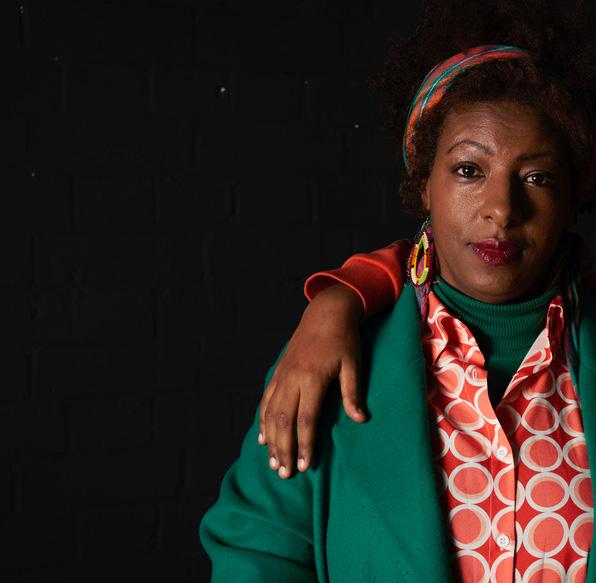
Yet, even when young people are caught in the cycle of knife crime and prosecuted, our current youth justice system often perpetuates the problem. The reoffending rate for young people stands at 32.5%. This is a harrowing statistic and reminds us that our current youth justice system is failing.
At Oasis, we believe that young people involved in knife crime are not inherently “bad” or “evil”— they are wounded. Their actions stem from trauma and difficult life circumstances. If we want to really address knife crime, we need a restorative, therapeutic youth justice system that heals wounds rather than punishes and perpetuates harm.
If young people are sent to prison without their underlying wounds being addressed —indeed, sometimes they may even be deepened — why would we expect their behaviour to change upon release? All behaviour is communication.
Violent crime communicates that young people need help.
To disrupt the cycle, we must stop asking, “What’s wrong with you?” and start asking, “What’s happened to you?”
That’s the philosophy behind Oasis Restore, the UK’s first secure school that we launched last year. Here, we care for young people convicted of serious violent crimes. Many of our students score extremely high on the Adverse Childhood Experiences scale. At Oasis Restore, we offer a full curriculum, refer to our young people as students — not inmates —have no bars on the windows, and provide enriching learning experiences. It’s still a secure environment. Students can’t leave. But their wounds are met with therapy and compassion, not punishment and condemnation.
As Oasis founder, Steve Chalke, said in his most recent book, “You can
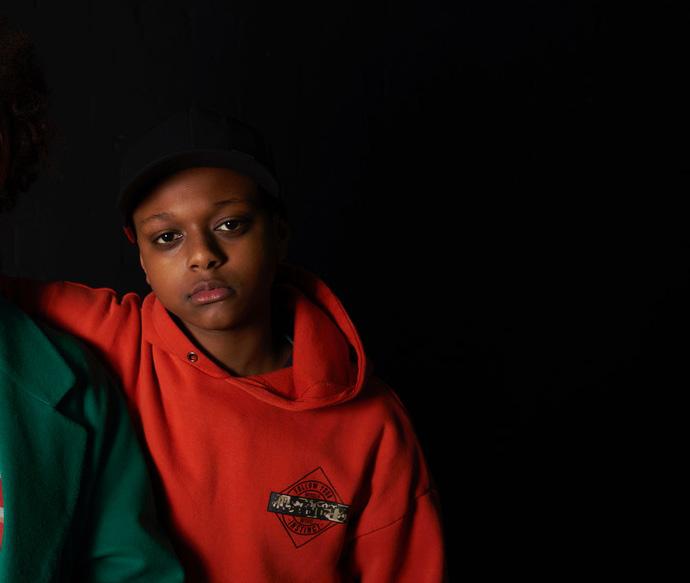
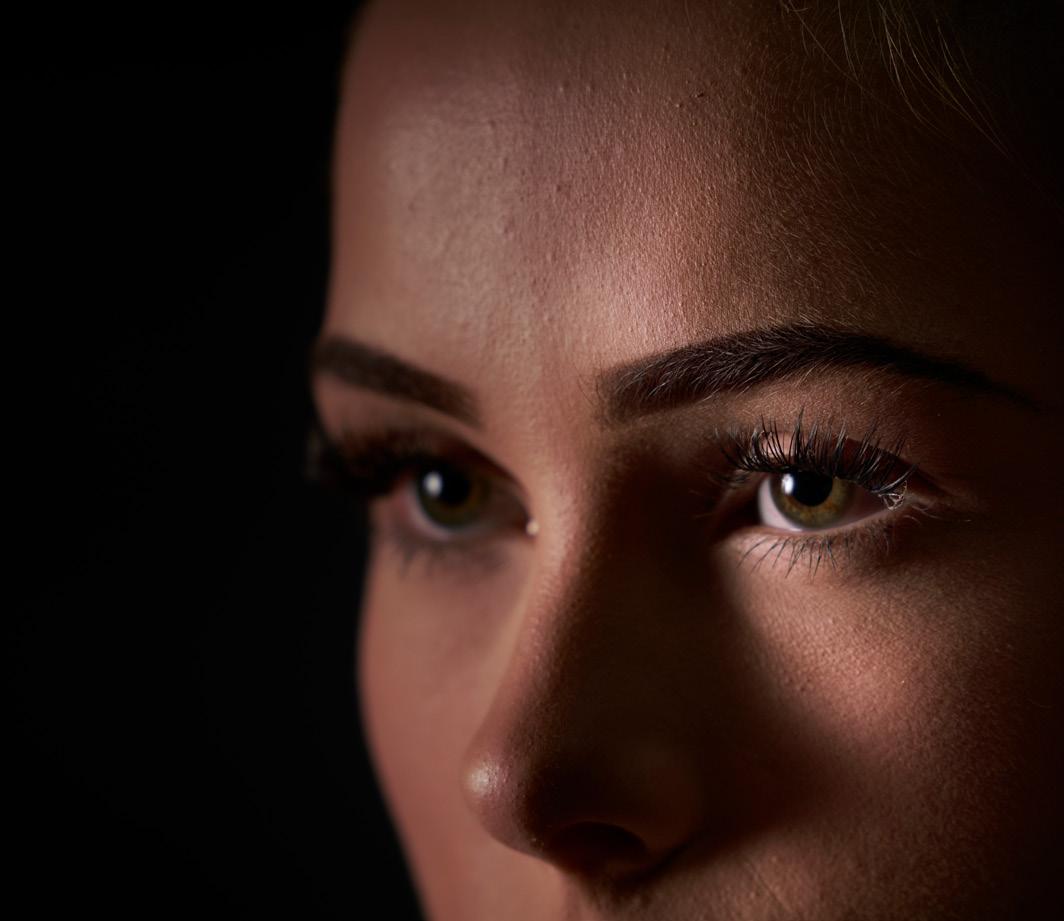
judge the wisdom of any society by the investment it makes in its children.”
We need to invest in youth hubs, pulling together local resources to provide the holistic, joined-up care our young people need to thrive. We must help our young people find purpose and hope — so they don’t fall into despair and violence, two of the conditions in which knife crime thrives. We need to invest in local communities – local young people – so that there is no one left out.
Oasis works nationally and in local neighbourhoods to build stronger communities where there is no one left out. For 40 years our innovative education, housing, youth, and community work has promoted inclusion, built opportunity, and created a movement to bring about social change.
Kat Agar CEO of Oasis Community Partnerships
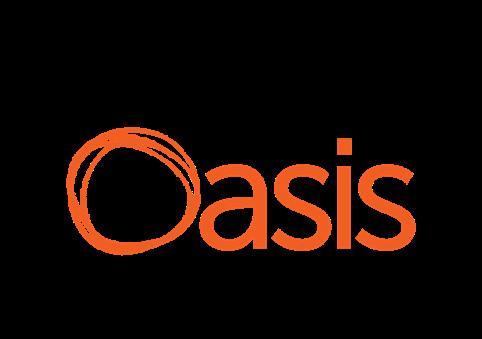
www.oasisuk.org


By Lorraine Hilder, Former Detective Superintendent, Metropolitan Police Lead on Child Exploitation and Missing Persons
Introduction: From Research
Knife crime continues to devastate lives across the UK, disproportionately affecting young people—both as victims and perpetrators. As a pracademic with 34 years of frontline policing and safeguarding experience—one of the authors of the Met’s Children & Young People Strategy (2021–2025)—and as a researcher at Cambridge, I’ve seen the harm caused by reactive systems and missed opportunities.
This article draws on my policing career, strategic policy work, and my Cambridge University research into
London’s most prolific young robbery offenders. Many of those responsible for serious violence were themselves victims of trauma and neglect. Knife crime isn’t just a criminal justice issue— it’s a child protection issue.
Youth violence often begins with lived trauma. Poverty, exclusion, domestic abuse, school exclusion, and familial incarceration are recurring backdrops in the lives of those who later carry and use knives. Unless we act upstream—early, holistically, and collaboratively—we are left managing symptoms, not causes.
Course Criminology and the 'Power Few'
The earlier a child is exposed to adversity, the more entrenched criminality can become. My Cambridge research focused on 81 young Londoners arrested four or more times for robbery in 2019. They made up just 6.5% of under-26s arrested for robbery, yet accounted for 24% of all such arrests. A clear 'power few' pattern emerged: high-harm, high-frequency offenders with deeply traumatic backgrounds.
In this cohort of 81 prolific offenders:
• 80% had been victims of crime themselves
• 63% had gone missing—over 12x the London average
• 49% were excluded from school
• 91% were known to social services
• 35% had an incarcerated family member
• Over 50% were gang-affiliated; 27% were involved in County Lines
These were children shaped by persistent harm and unmet needs. For many, knife-enabled robbery was a symptom of trauma, not its cause.
Read the full thesis here: https://link.springer.com/ article/10.1007/s41887-021-00070-7
One of the most urgent insights from my research was the scale of missing episodes among young robbery offenders. Many had lived in children’s homes and were reported missing frequently—sometimes daily—often returning with cash, burner phones, or signs of exploitation.
To tackle this, I was appointed the Met’s Lead Responsible Officer for Missing People and Child Exploitation. Working with my Detective Inspector Jo Clark (Met’s Child Exploitation Training Team) and Florence Kroll CBE at the Royal Borough of Greenwich, we co-produced a national training video for care home staff, embedded through Thrive—a traumainformed framework supported by the London Innovation and Improvement Alliance (LIIA).
Care staff are often under pressure. But when missing episodes are treated as routine or behavioural, we miss critical opportunities to intervene.
Knife crime doesn’t sit in isolation. It’s connected to County Lines, drugs, sexual exploitation, and organised crime. Too often, agencies fail to join the dots. Who is being repeatedly arrested? Who is recruiting and exploiting these children? Who profits from their harm?
Until we prioritise disrupting adult networks, we will continue to criminalise the exploited.
65% of my research cohort were Black. While many factors contribute, structural racism is clearly present—in school exclusions, stop and search, care placements, and access to services. We must embed anti-racist, culturally competent safeguarding into every layer of knife crime prevention.
Stop and search is vital for removing weapons but must be used with care. Done wrongly, it undermines trust. Done correctly—intelligence-led,
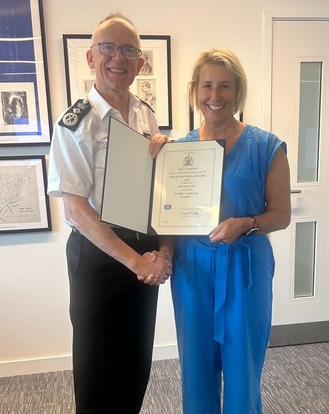
respectful, and community-reviewed— it saves lives.
Over half of the 81 offenders I studied were gang-affiliated. Many carried knives out of fear. Searches should be data-driven and supervised. Police must be well-trained. And communities must understand that lawful, protective action is different from harassment. Support and accountability must go hand in hand.
Step into a Young Offender Institution and you’ll meet bright children with undiagnosed dyslexia, ADHD or autism. By Year 9 they’re excluded—then recruited.
PRUs can be turning points or entry points to crime. Schools need trauma-informed staff, neurodiversity assessments, and access to vocational paths. In the 1950s, technical colleges offered trades. We need them back.
Trauma doesn’t stop at the school gate. If a child grows up in violence, they bring that trauma with them. Disruption is often a cry for help. We need more spaces for healing—art, sport, mentoring, and safe relationships.
Over 75% of the cohort experienced parental neglect. These weren’t isolated events, but long-term harm. We need to treat these children as victims of system failure, not just offenders.
As the proverb goes, it takes a village. Today, too many villages are silent.

We know what works. Let’s act:
1. Target exploiters. Use confiscated assets to fund youth services.
2. Embed trauma-informed training in all frontline services.
3. Screen for neurodiversity early.
4. Incentivise employers to offer apprenticeships.
5. Share harm data across agencies.
6. Co-chair youth scrutiny panels on stop and search.
7. Expand Thrive trauma-informed practice nationally.
The Met’s Children’s Strategy (2021–2025) reflects this evidence. It embeds trauma-informed policing, a gravity matrix, and earlier diversion. Click here to find it:
https://www.met.police.uk/SysSiteAssets/ media/downloads/force-content/met/ about-us/children-strategy/the-childrenstrategy-a4-final.pdf

Knife crime is not inevitable. But prevention is more than enforcement. My research, policy work, and policing experience all say the same thing: support the 'power few'—the high-harm young people who need justice, stability and healing.
Ask not just what they’ve done, but what’s happened to them. That’s how we save lives.
• Cambridge Thesis: https://link.springer.com/ article/10.1007/s41887-021-00070-7
• LinkedIn: https://www.linkedin.com/ in/lorraine-hilder-31436227
Lorraine Hilder
Former Detective Superintendent, Metropolitan Police Lead on Child Exploitation and Missing Persons



By David Kingsley, Associate, Criminology Services
This article explores how the evolution of gang identity — from territorial crews to digital personas — has shaped the current landscape of youth violence across London and beyond.
The Postcode Era: Bounded Conflict and Brotherhood
London’s traditional gangs of the 1990s and early 2000s operated within a more structured ecosystem. Many emerged from council estates impacted by deindustrialisation, housing inequality and underinvestment. Young people joined postcode-based crews for protection, economic opportunity, and status — but also for identity.
These groups often mirrored what Social Disorganisation Theory (Shaw and McKay) would describe as environments with weakened informal
social controls — where family support, schooling, youth services and stable housing were fractured or absent.
There was hierarchy. Territory mattered. Feuds were largely contained within defined areas and could, at times, be de-escalated through local intermediaries or outreach workers.
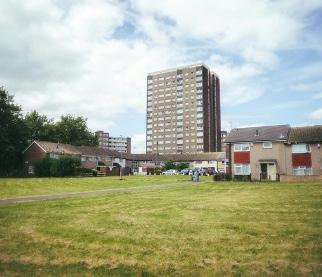
The rise of UK drill music in the 2010s — and with it, platforms like YouTube, Snapchat, and TikTok — reshaped gang dynamics entirely. Music videos became battlegrounds. Lyrics became coded confessionals. The local gang became a brand, performable and exportable to the world.
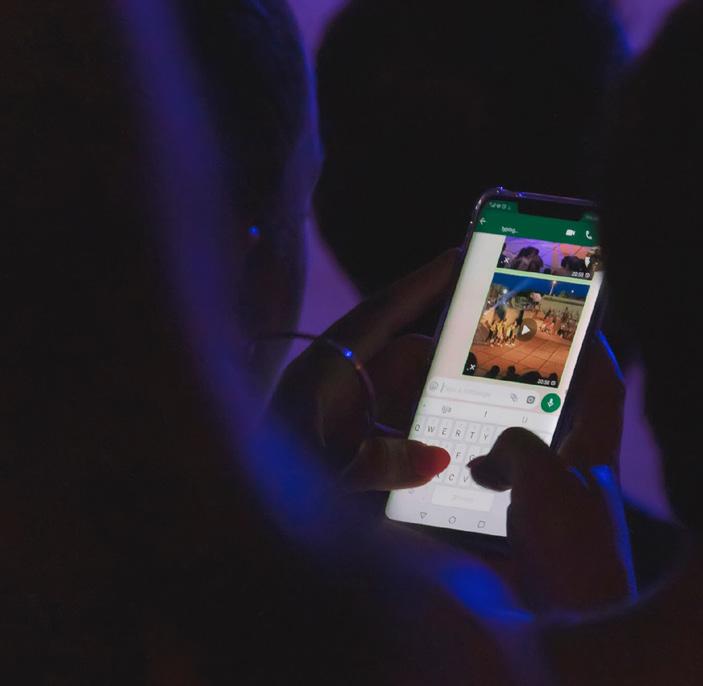
As Cultural Criminology suggests, youth violence is now as much about performance and symbolic identity as material gain. Social media provides instant visibility, allowing young people to craft reputations through aesthetic codes — masks, balaclavas, lyrics, and violent imagery. A feud can be sparked by a bar in a song, a disrespectful emoji, or a comment left on a video viewed hundreds of thousands of times.
Today, many gangs operate as splinter sets — decentralised, loosely affiliated crews with flexible identities. In some cases, individual artists build their own brand without formal backing. The result is a more unpredictable, ego-driven and algorithmically amplified cycle of conflict.
A crucial part of understanding today’s youth violence involves the use of OpenSource Intelligence (OSINT) — the process of collecting and analysing publicly available data to generate insights. This includes music lyrics and videos, social media activity, digital memorials, YouTube comments, online feuds, court documents, and local community reports.
Used ethically and with contextual care, OSINT helps practitioners and researchers identify emerging risks, track affiliations, and interpret the cultural language of conflict. It also supports safeguarding by bridging the gap between offline incidents and their online precursors — whether in lyrics, emojis, or viral content.
A powerful real-world illustration of symbolic capital spilling into legal consequence involves drill rapper Kammar “Kay - O” Henry - Richards, convicted of the revenge murder of Kacey Boothe in August 2022. He received a life sentence with a minimum of 37 years in January 2025.
This murder formed part of a longrunning and deadly feud between two rival gangs from London Fields and Homerton, areas in Hackney with a history of intergenerational tension dating back over two decades. The conflict has claimed numerous lives and inspired a wave of drill music from both sides — often laced with references to stabbings, shootings, and disrespect of the deceased.
Just days after the killing, Henry - Richards released a drill track titled “ Laughing Stock”, which included the chilling lyrics:
“Big Boothe and Little got hit, same sig, that’s a sour family… handguns come handy.”
The lyrics referenced the murder in explicit terms, including details prosecutors said were not yet publicly known. The song amassed over 2.3 million Spotify plays and was admitted in court as evidence of both motive and affiliation. On the day of his sentencing, Henry-Richards released another song, “C’est La Vie”, featuring his mugshot and lyrics referencing prison life and smuggling — which quickly trended online.
This case demonstrates how drill lyrics — far from being abstract artistic expression — can operate as both a badge of honour within gang culture and, increasingly, as self-incriminating evidence in criminal trials.
Social Field Theory (Bourdieu) offers a useful framework here. In the “field” of drill and gang culture, reputational capital — earned through lyrical authenticity, violence references, and online traction — equates to power and status. Yet when this field intersects with the legal system, that symbolic capital becomes legal evidence, often with life-altering consequences.
From London to the Home Counties: A New Geography of Violence
The effects of this cultural shift are not confined to inner-city boroughs. Towns in Hertfordshire, Essex, Kent, and beyond have seen sharp rises in youth violence — particularly where county lines drug activity has taken root.
As John Pitts and Paul Andell have outlined in their work on criminal exploitation, these peripheral areas often lack the youth infrastructure or cultural literacy to respond effectively to imported gang dynamics. Young people from these towns are being groomed online, pulled into risk-taking behaviours, and exposed to retaliatory violence far from the boroughs traditionally associated with gang culture.
Simon Harding, in his book Street Casino: Survival in Violent Street Gangs, describes this environment as a highrisk, high-reward “street casino,” where young people accumulate “street capital” — status earned through fear, notoriety, resilience, and perceived authenticity. This concept helps explain how gang identity and drill culture embed themselves in areas beyond traditional urban spaces, offering a perceived path to power and respect for those denied access to conventional success routes.
The gang is no longer a hyperlocal phenomenon. It is a networked, stylised identity — part brand, part lifestyle, part trauma response.
Several criminological theories help illuminate these shifts:
• Strain Theory (Merton) explains why young people who internalise societal success goals but face blocked legal pathways may turn to alternative, often criminal, means for status and financial gain.
• Subcultural Theory (Cohen, Cloward & Ohlin) frames youth gangs as forming their own value systems in opposition to the mainstream — evident in the glorification of retaliation, “scoreboards,” and coded slang.
• Cultural Criminology highlights the emotional, aesthetic, and performative aspects of youth violence today — acts not only of survival but of symbolic defiance, amplified online for maximum visibility.
• Social Field Theory (Bourdieu) offers a lens on why young people invest in reputational capital within their “field” — in this case, the social media-drill nexus — when other fields (education, employment) feel closed to them.
Behind every statistic is a child — someone’s son, daughter, or sibling. Many of the young people caught in this cycle are navigating trauma, poverty, housing insecurity, undiagnosed mental health issues, and racialised school exclusions.

They are not born violent — they are shaped by environments that fail to meet their needs and then punish them for how they adapt.
We also see the toll on families, schools, and communities. Parents often feel powerless. Practitioners report burnout and secondary trauma. Some areas operate in a constant state of fear, grief and retaliation.
If we are serious about tackling knife crime and youth violence, we must move beyond reactive enforcement and towards systemic, trauma-informed approaches.
Key steps include:
• Invest in sustainable youth services that offer belonging, creativity, and safe spaces — especially in areas newly affected by county lines.
• Expand digital safeguarding training for professionals to better interpret online behaviours and drill-related references.
• Fund OSINT-informed local intelligence hubs that bridge frontline youth work, community insight, and data analysis.
• Rebuild community anchor institutions — youth clubs, schools, faith spaces — that offer alternative fields for recognition and development.
• Educate through media literacy and critical drill engagement, helping young people interpret rather than imitate harmful content.
• Follow public health models, such as the Glasgow Violence Reduction Unit, which treat violence as preventable through whole-system support.
We are living through a cultural shift in how young people form identity, navigate belonging, and express pain. From postcodes to playlists, the gang landscape has evolved — but the root causes remain.
Let us resist the urge to criminalise the symptoms while ignoring the conditions. Let us build systems that see young people not as threats, but as products of structural failure — and, most importantly, as people with potential.
If we truly want to fight knife crime, we must listen harder, intervene earlier, and care deeper.
David Kingsley Associate, Criminology Services

www.criminologyservices.co.uk
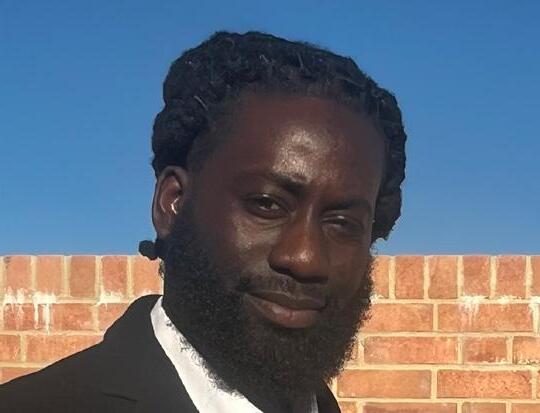


By Rukanah Mogra, Media & Communications Intern, Muslim Council of Britain
When mosques offer safety and support, lives can be saved.
Knife crime has become a national crisis, spreading through our streets, schools, youth communities, and even our places of worship. In the year ending March 2024, police recorded more than 50,000 knife-related incidents in England and Wales. Tragically, almost one in six of those caught carrying a
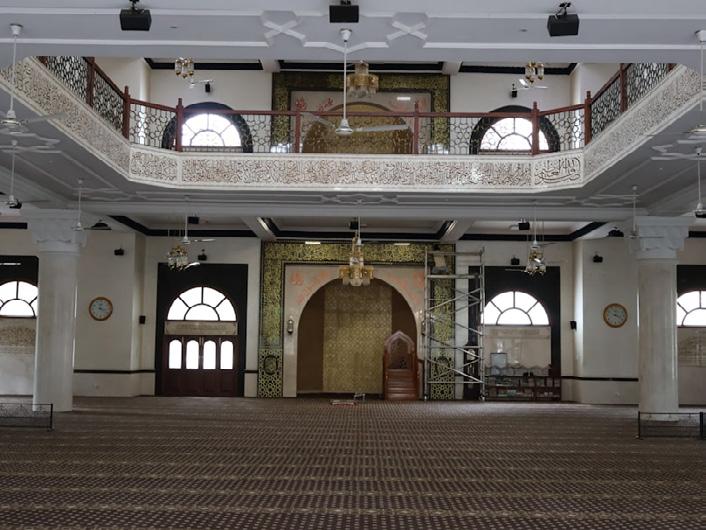
knife were under the age of 18. Behind each statistic lies a grieving family, a devastated community, and a young life that could have gone on to do so much more.
As British Muslims, we are not bystanders to this crisis. Our faith calls on us to preserve life, stand for justice, and protect the vulnerable. Islam teaches us: “If any saves a life, it is as if he saves the lives of all mankind” (Qur’an 5:32). This isn’t just a moral calling –it’s a communal obligation. It is a call to action for every mosque, Islamic centre, and youth leader: let our spaces be sanctuaries of safety. Let them be part of the solution.
Knife crime is not new, but it is escalating. Sharp instruments were used in 46% of all homicides in England and Wales in the past year. What’s especially alarming is how increasingly
young the victims and perpetrators are. Teenage boys, often from marginalised communities, are most at risk – many carrying knives not to harm, but out of fear and peer pressure. These youth are crying out for alternatives, mentorship, and meaning. Mosques are perfectly placed to offer them just that.
As vibrant community hubs, mosques are more than just places of worship. With the right tools and intention, they can offer education, intervention, and hope. By installing knife amnesty bins, delivering youth-focused programmes, and forming local partnerships, mosques can create real, life-saving change.
We’ve already seen this in action.
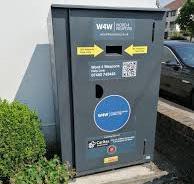
Green Lane Masjid, in Birmingham, responded to the tragic 2019 murder of 16-year-old Abdullah by relaunching its anti-knife campaign. Their knife bin, which previously collected just seven weapons, filled with over 80 surrendered knives within months. They partnered with the police, ran youth events, and delivered a khutbah on the sanctity of life – reaching 5,000 worshippers.
South London’s Balham Mosque organised a ‘Lives Not Knives’
conference and soon after installed a knife bin in partnership with Word 4 Weapons . In just one year, the number of surrendered weapons tripled. Community trust grew, and violence declined.
In partnership with Nottinghamshire Police, the Trustees of Nottingham Islam Information Point placed a knife amnesty bin outside their mosque in 2024, offering a safe place for anyone wishing to dispose of offensive weapons and help reduce crime on the streets of Nottingham.
There are many ways to continue the success of this work.
Mosques can install knife amnesty bins by partnering with Word 4 Weapons or local police. Campaign funding could be secured through council grants, Violence Reduction Units [VRUs], or as an act of charity. Using this funding to host workshops, sports sessions, or peer-led campaigns is imperative in engaging the Muslim youth. Finally, Imams should use their platforms to deliver Friday Sermons and share awareness on social media about the importance of tackling knife crime.
London’s Muslim communities have not been untouched by the devastating impact of knife crime – with families, youth groups, and places of worship all grappling with its consequences. In response, mosques across the capital have stepped up, offering mentoring programmes, educational workshops, and safe spaces for young people to seek guidance. These faith-based efforts have become essential hubs of support and prevention. For those who may feel hesitant about speaking to someone at a mosque, the Fighting Knife Crime London directory offers a wide range of confidential support and
mentoring services – reinforcing our primary mission of providing accessible help to those affected.
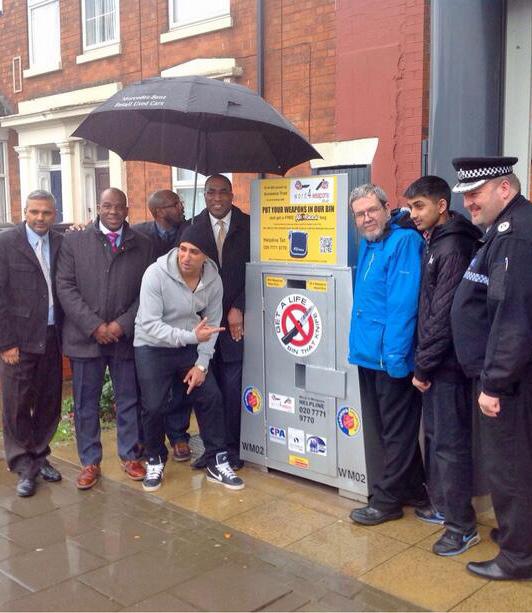
Your mosque’s leadership can literally save lives by influencing choices. In the words of one community activist: “Every knife we bin and every young soul we steer away from violence is a victory for us all.”
Let’s strive for those victories every day.
Picture a teenager – scared, isolated, clutching a knife as they walk near a mosque or behind a supermarket. Then they see a sign: “Live Your Life, Drop the Knife.” No cameras. No judgement. Just a chance to walk away. In that moment, a life can change.
The amnesty bin doesn’t need to be on mosque grounds – just nearby, in a location that feels safe, discreet, and accessible. What matters is that the mosque raises awareness to make sure young people know it’s there.
It’s vital that mosques work closely with local authorities and the police to
identify the most appropriate locations – ones that offer privacy, accessibility, and above all, a real opportunity for change.
Our mosques must be more than buildings. They must be beacons of mercy.
Let’s rise to the challenge – with faith, with unity, and with action.
Together, we can save lives. Together, we can end this cycle.
Stats sources:
• Office for National Statistics – Crime Survey, 2023
• GLMCC Press Statement, 2023
• Balham & Tooting Mosque Case Study, 2023
• Word 4 Weapons Introductory Report 2025 - www.word4weapons.co.uk
Rukanah Mogra
Media & Communications Intern, Muslim Council of Britain

mcb.org.uk
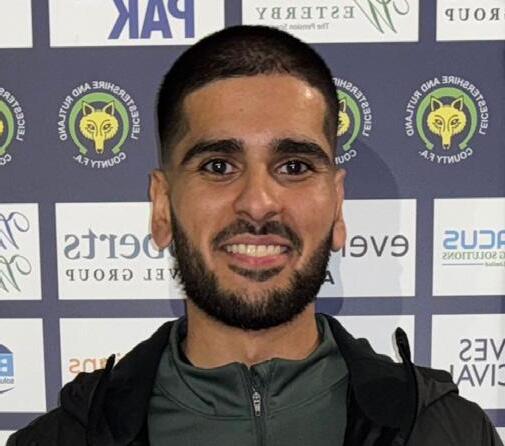
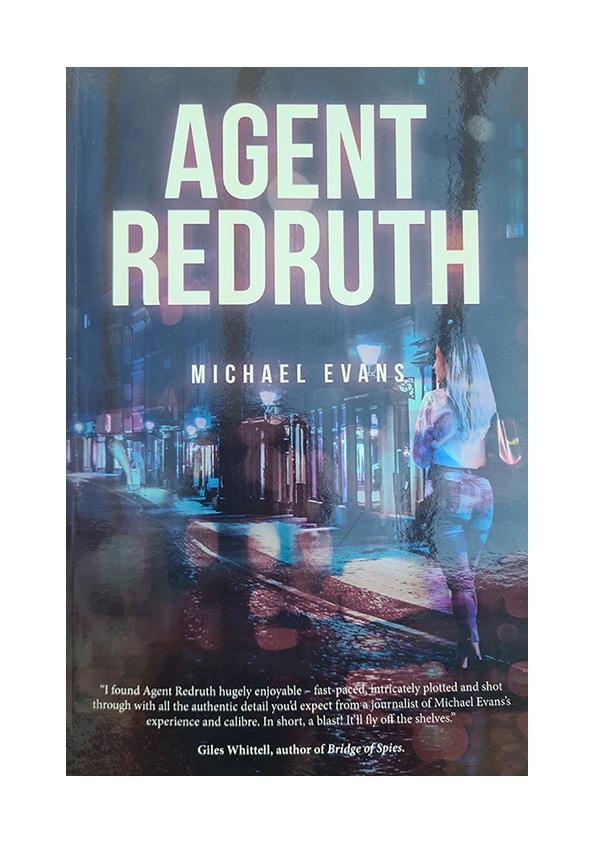


Sorrel Nation flexes her vocal repertoire on a debut album rich in breakout qualities Traces of pop, rock and folk meld into an enticing body of work. Sorrel Nation is a name to remember for many reasons. Most notably a wonderful album -threechordsandthetruthuk.blogspot.com
Sorrel has one of the most beautiful voices I’ve heard in a long time - it’s so yearning and full of emotion"
Steve Balsamo – Singer/Songwriter


By Anna Mbwese, Founder, Shine AI
A new career discovery and guidance platform to help young people from our inner cities discover what is possible and start the journey to the best life they can get.
How many times were you asked that age-old question as a teenager: “ What do you want to be when you grow up?”
On the other hand, how many young people do you ask about their aspirations, only to be met with blank stares, shrugs, or “I don’t know” . It’s not that they’re lazy or unambitious.
They’re often just lost in a system that gives them no clear direction.
Meanwhile, over a third of UK youth aged 10–19 live in poverty (End Child Poverty Coalition, 2023). These young people are disproportionately pushed into low-paid, unstable work, or worse, no work at all. In 2022, 6% of 25 to 29-year-olds from lower working-class backgrounds were unemployed, double the national average of 3% for that age group (Social Mobility Commission). Interestingly, six of the ten boroughs with the highest youth unemployment were also top-ranked for serious youth violence.
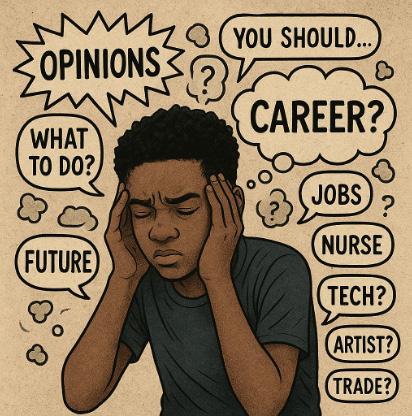
Career guidance isn’t a luxury; it’s essential. A UK study by Education and Employers (2020) showed that students who had four or more careerrelated interactions at school were 86% less likely to become NEET (Not in Education, Employment, or Training). That’s a statistic that needs to be spoken about.
Yet in the UK, 63% of 18–25-yearolds say they don’t know where to find career advice (Youth Group, 2022), and 48% feel blocked from accessing it altogether. While 36% of secondary students get work experience (already a sadly low number), only 38% of those, get to do it in a job they’re actually interested in (FE News, 2022). So, essentially, most career guidance is not helping our youth to find what they want to do or showing them how to get into it.
And with ongoing cuts to youth services, the streets are increasingly stepping in to offer opportunities - often dangerous, illegal, and violent ones.
A while back, I took two bright young people, both of whom hadn’t completed their GCSEs, to a Youth Careers Fair. The goal? Get inspired. The result? Soulcrushing disappointment. Every single stand was aimed at university students or graduates. No apprenticeships. No alternative routes. No real hope. One of the teens summed it up perfectly: “It’s hard to be motivated when you can’t find the answers to your questions.”
I’ve spent nearly a decade working in recruitment and volunteering with youth. I’ve watched too many young people fall through the gaps. My team and I were tired of waiting for the system to change, so we decided to change it ourselves.
So, we built the answer: Shine AI.
Shine AI is the only career discovery platform made for young people by people who understand them. Not for schools. Not for universities. Not for parents. Just them. It’s designed to help inner-city youth aged 16–24 figure out where they want to go—and exactly how to get there. Shine AI is flexible and accessible for everyone, including those who don’t have the standard qualifications behind them.
We’re not talking about outdated job quizzes or dusty pamphlets from the ‘90s. We’re talking about a tangible, practical guidance tool, built for young people wandering without direction, falling through the cracks when going from secondary school into further education or work.
From uncovering lesser-known career paths to connecting users with real, achievable opportunities, Shine AI walks with them every step of the way.
We cover the “how,” the “why,” and even the soft skills to make it all possible— because a CV without the confidence to speak to someone, without knowing what is expected in an interview, doesn’t take you very far. Skills such as goal setting, planning and executing build a young person’s confidence. Which can ultimately lead to employment and financial sustainability. Empowering young people to break free from cycles of poverty and crime by offering access to real opportunities and increasing their social mobility.
To celebrate Shine AI's launch, we ran a logo design competition for 16–24-year-olds across the UK. We would like to take the time to congratulate our winner, Ihsan Ullah, a second-year BA (Hons) student in Advertising and Brand Design at Ravensbourne University. He discovered the competition on Instagram and entered – excited at
the idea of helping other young people navigate their futures. Ihsan said he wanted to “test his skills in a real-world challenge” and dreams of one day founding his own design studio. This is the kind of self-belief and drive we hope Shine AI inspires in thousands more.


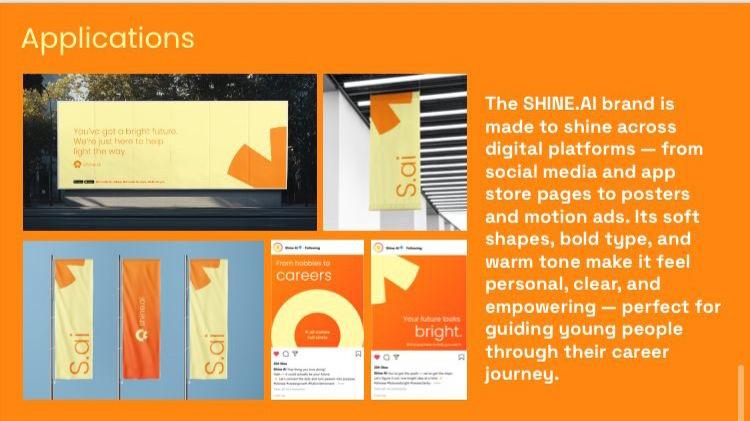
Thank you to every young person who participated in our logo design competition. We had so many wonderful entries that it was a difficult decision for the panel. We were blown away by the talent and wanted to take some time to recognise the artworks that stood out the most.

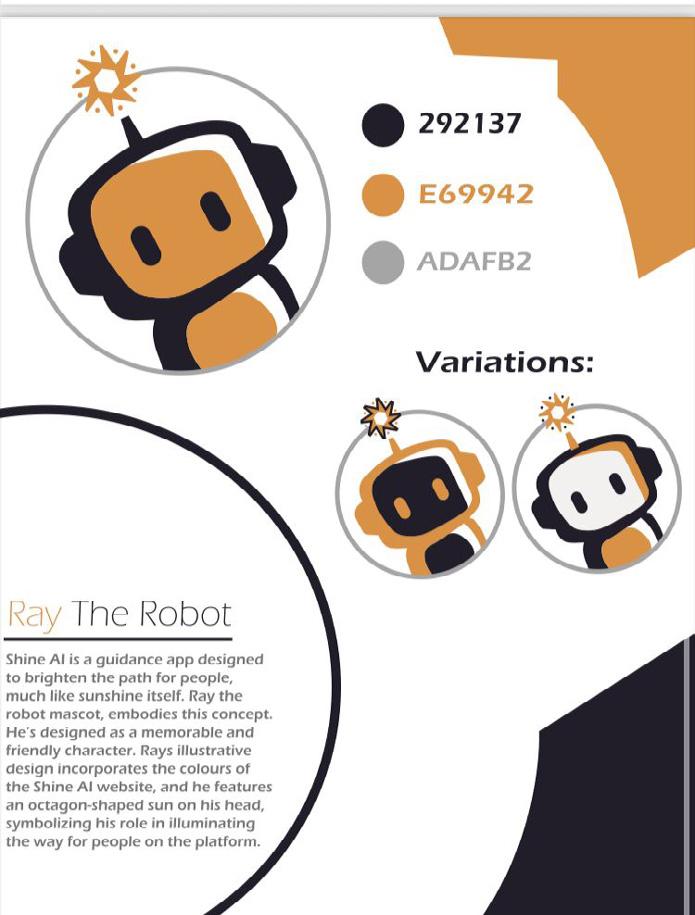





The Countdown Begins
We’re launching SHINE AI on 1st August 2025.
Sign up at www.shineai.tech to get early access and help shape the platform through your feedback. You will then get early access to the app, and have the chance to give your feedback and ideas on how we can make it even better for the young users.
Because if we can show young people that a financially sustainable life is possible, regardless of where they start, we can change lives. We can keep more of them off the streets and see them go onto career paths that genuinely lead somewhere.
They say, “It’s not what you know, but who you know.” But what if you don’t know anyone? Now you know us.
Let’s change career education forever and let the young people of London SHINE.AI.
Anna Mbwese Founder, Shine AI

www.shineai.tech



Anna Mbwese

By Leroy Nicholas, Founder and CEO, SweetScience Foundationleroy@sweetsciencefoundation.org.uk
There’s no such thing as a knife crime story that isn’t disturbing.
One that sticks in my mind is about a woman who, around 4pm, heard what she thought was the sound of a wounded animal. Screeching. She stepped out of her flat and followed the noise to behind the garages on her estate. That’s where she found a young boy, face down in a pool of blood.
She took off her coat and tried to stop the bleeding.
She later told police that the boy - still in his school uniform - was crying out for his mum, begging her not to let him die. It turned out he’d been lured there by a
girl from school, only to be ambushed by a gang of boys wielding knives. They stabbed him to death. Another tragic and unnecessary loss of life.
People throw around all kinds of reasons for the rise in knife crime: grime music, absent fathers, gangs, postcode wars, social media, fear, hopelessness. Maybe all of that plays a part. But what’s the cure?
For over 20 years, I’ve worked with young people in schools, Youth Offending Teams and Pupil Referral Units. In 2023, we became a not-for-profit charity: SweetScience Foundation. We use noncontact boxing to do three things:
Get young people’s Attention . Earn their Respect . Win their Trust That’s what I’ve coined ‘the ART of Boxing’. Only when we’ve done that can we start to really impact a young person’s life.
We use boxing as a Trojan horse, and it works. It's effective. It’s progressive. Most people will agree that boxing builds confidence and resilience. But we take it further.
We bring kids into a team and use that space to help them learn about themselves. We show them what’s out there, give them strategies to navigate the pressures that surround them every day and use the discipline of boxing to build character. To open conversations. To interrupt negative cycles. We encourage young people to develop ‘introspection’ - a word many of them have never heard or learned to practice.
Our unique programme uses boxing’s code of conduct to build a mindset that looks down on carrying knives. We bring in mature, local, ex-boxers with lived experience as mentors. These are men and women who’ve been there, seen it all, and turned their lives around. They offer more than training, they offer reallife lessons, character education – and a moral compass.
We don’t just teach boxing. We build strong, grounded young people - with purpose, direction and hope. In fact, our motto is based on a quote from Frederick Douglass “It’s better to build strong children than to repair broken adults”.
I saw it first-hand growing up. My boxing gym was full of every kind of person, different cultures, different backgrounds, different personalitiesbut we shared values: discipline, honour and respect . That’s what we pass on. We help young people understand that the
world can be their oyster but they’ve got to position themselves to achieve it.
I’ve been talking about solutions to knife crime for about 20 years, and to be frank with you, I haven’t seen many consistent steps forward. In fact, sometimes it feels like we’ve gone backwards. More youth clubs have shut. Fewer targeted mentoring programmes exist. And in schools, there’s barely any real focus on character development.
But let’s be clear: this is not just a youth issue. It’s a systems issue.
Every year, we see another round of media outrage. Another set of headlines. Another funeral. Another “urgent roundtable.” But the same deep problems remain:
• A lack of early, consistent intervention
• A lack of real character education in schools
• A lack of spaces where young people can feel safe, seen and supported.
I get that school is a place to get qualifications. But in today’s world, teaching a young person not to carry a knife is just as important as teaching English.
So how do we really tackle knife crime? Here’s what I think:
Character education should be on the curriculum. Teaching young people how to communicate, self-regulate, resolve conflict and build a sense of purpose is just as vital as academic achievement.
We need more lived-experience professionals in youth spaces. There’s no substitute for a mentor who “gets it.” Not just because they’ve read about
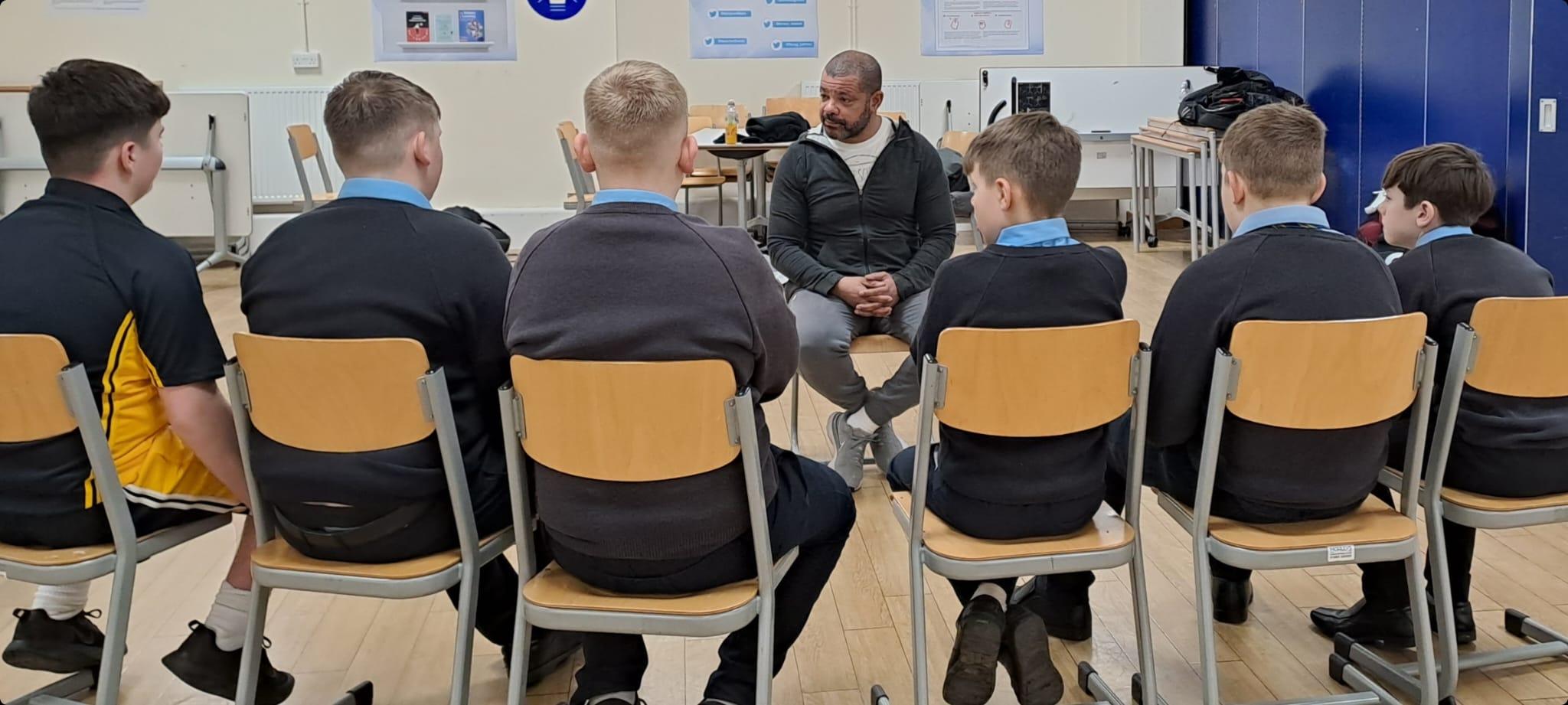
trauma or post about it on TikTok, but because they’ve walked the road themselves. The best interventions come from people who know the streets, but have chosen a different path. The justice system should include preventative education. Take some of these kids into courtrooms. Let them sit in on a real-life trial. Let them see the reality.
My eldest daughter, now a qualified lawyer from a working-class background, recently attended a kniferelated murder trial at the Old Bailey. She told me how heartbreaking it was to see a young person in the dock, completely unaware of the legal jargon - with barristers and judges talking over his head, while holding his future in their hands. Prevention isn’t just about telling kids not to carry knives. It’s about making sure they truly understand the cost.
This crisis isn’t going to go away without focused, targeted work. There must be investment in what's already working. There are brilliant grassroots projects and charities in London making a real, lasting impact. But too often, they’re overlooked in favour of new “initiatives” dreamed up by people with no lived insight.
The Government should fund what’s already proving effective. Scale it. Study it. And fund it long-term. Too many interventions only kick in after a young person has been excluded, arrested or stabbed. We need to be upstreamreaching kids before they even think about picking up a knife. That means primary school age, doesn’t it?
No one’s ever going to report on the young lad who didn’t carry a knife. Or the one who didn’t stab someone because of the trust and guidance of a boxing coach. SweetScience Foundation know those quiet victories. Thankfully, we've seen them thousands of times. Our goal is for the SweetScience programme to be on the national curriculum – right alongside rugby, netball, tennis and football. Because we’ve got the evidence and the impact. And it’s time the system caught up.
The current strategies clearly aren’t working. We need real, relatable role models; not celebrities on socials - but people from the same estates. That’s who young people connect with. Knife crime is a community crisis, so it’s going to take a community - parents, teachers, coaches, mentors, leaders - to tackle it together.
Think about this: it reportedly costs up to £400 a day to place just one child in a Pupil Referral Unit. SweetScience can deliver long-term change for just £42 per child through our 10-week programme.
It’s not just us saying it. Independent evaluations - including by the World Health Organisation and Sport England - show the impact of our work:
• Improved mental health
• Reduced negative behaviours
• Better physical and emotional wellbeing
• Healthier lifestyles.
The government spends £119,000 a year to keep one young person in a Young Offenders Institution.
We could run SweetScience programme pilots in 50 schools for under £1 million a year reaching over 24,000 students. That’s impact and prevention. A national roll-out would cost just a fraction of what’s already being spent on emergency responses.
I believe the next step is national backing for proven community models like SweetScience Foundation - not more reports, but real action. If our society is serious about reducing knife crime, improving young lives, strengthening communities, and easing pressure on public services - then there needs to be more funding for the charities putting in the work - giving young people hope, direction and a different story to write for themselves.
Media isn’t going to be writing headlines about “the boy who didn’t carry a knife”. But we will know him. And we’ll keep building more like him. We don’t hope for change. We build it.
Leroy Nicholas Founder and CEO, SweetScience Foundation

www.sweetsciencefoundation.org.uk
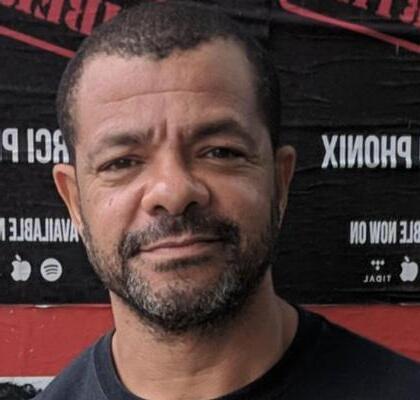

Food for Thought
Here are the Presentation slides from an address given by our Founder Bruce Houlder at Westminster Insight’s conference “Tackling Knife Crime” at the Institute of Structural Engineers in London on June 13th 2025.
Majority of knife offences are committed by young people
Sentencing has become more structured over time; guidelines increase consistency but reduce judicial discretion.
Sentencing is now more a "science" than an "art," sometimes sidelining individual circumstances and societal impact.
Knife crime sentencing is influenced by new offences and legislative adjustments/micromanagement
Sentence levels can be driven up by this approach. Unintended consequences result.
Knife violence affects entire communities: fear, economic decline, loss of public trust, and overstretched services.
Systemic failures in education and youth support (e.g., school exclusions) contribute to crime escalation.
Knife violence affects entire communities: fear, economic decline, loss of public trust, and overstretched services.
Sentencing Reform Proposals: Critiques:
• End short-term prison sentences under 12 months.
• Extend suspended sentence limits.
• Expand early release for good behaviour (down to one-third of sentence).
• Increase tagging of released prisoners.
• Positive steps, but success depends on stronger rehabilitation, probation, and post-release monitoring.
• Reform without support services risks failure.
• Prison is necessary for some violent offenders but often fails as a deterrent or rehabilitative tool.
• Many knife-carriers act from fear or “self-defence”, not malice.
• No solid evidence that prison deters knife crime; some evidence suggests it worsens outcomes.
• “Prison works” _ meaning what?
Legislation targets not just use and possession, but also sales and distribution of knives, especially online.
Recent Home Office proposals include:
• Age verification checks, Restrictions on delivery (ID at handover).
• Online retailers must report bulk/suspicious purchases.
• Content Removal Notices.
• Licensing scheme consideration for knife retailers.
Court delays (up to 4 years) severely hinder justice for both victims and defendants.
Temporary fixes (e.g. removing jury trials) are controversial and risk undermining justice.
The backlog has grown due to underfunding and political failure to tackle the multiple issues involved
Judges cannot speak publicly but they are not impressed …
Sentencing guidelines for under-18s- purpose:
Preventing future offending.
Promoting welfare and reintegration.
Avoiding unnecessary criminalisation.
Young offenders often face hugely complex personal and social issues (trauma, domestic violence and drug –taking, poverty, peer pressure, changes during puberty).
Overly punitive approaches ignore developmental immaturity and societal responsibility.
Too easy?
Does it work?
Does it make us feel better?
Blaming others easier than addressing the reasons for failure. We could first address the reasons we have knife crime, rather than the immediate cause.
• Study what the experts say and learn from real evidence (e.g. Professors Gilmour and Dr Peter Neyroud) - advocate for preventive justice:
• Greater focus on out-of-court resolutions, youth work, education.
• Examples like Birmingham’s “Turning Point” show promise.
• Preventive approaches struggle for political attention due to complexity and delayed results.
Professor Stan Gilmour

The allure of retributive justice lies partly in its narrative simplicity. It offers clarity, decisive action, and the satisfaction of punishment…Preventive justice, by contrast, struggles for political oxygen. Its narratives are inherently more complex, its successes less visible, and its timeframes extend beyond electoral cycles. When knife crime is prevented through youth work, education, or community intervention, there is no headline, no photo opportunity, no clear moment of resolution. The political challenge of selling prevention is compounded by the need to justify spending on social programmes that may take years to show results.
Professor Stan Gilmour
• Sentencing is only one tool—and a blunt one—for tackling knife crime. Only necessary when the rest of us have failed.
• Without addressing root causes (e.g poverty, trauma, drug laws, exclusion), new laws and harsher penalties won’t solve the problem.
• A societal shift toward prevention , rehabilitation, and early intervention is urgently needed. Challenge simple narratives.
• Empowering practitioners, listening to experienced voices, and funding support services are key steps forward.

